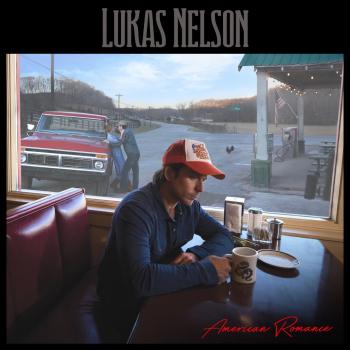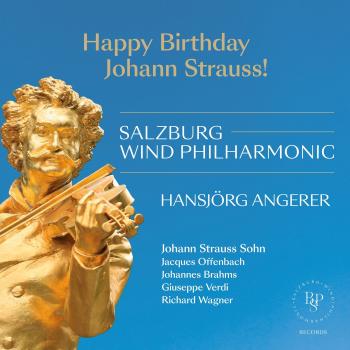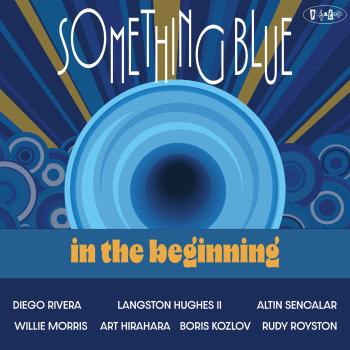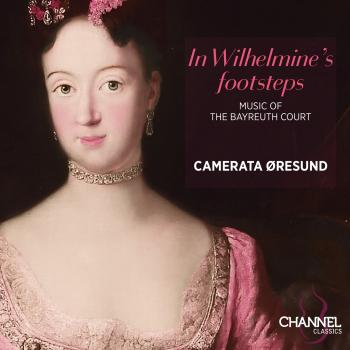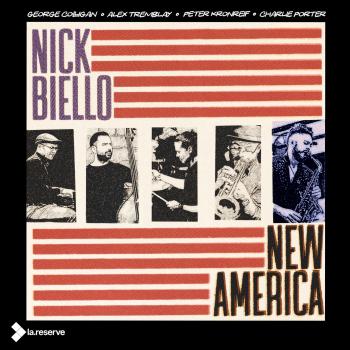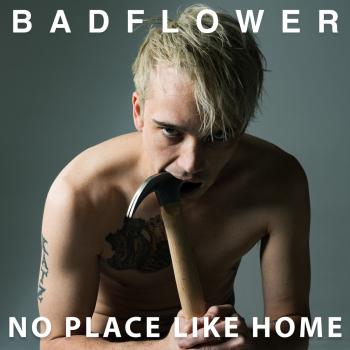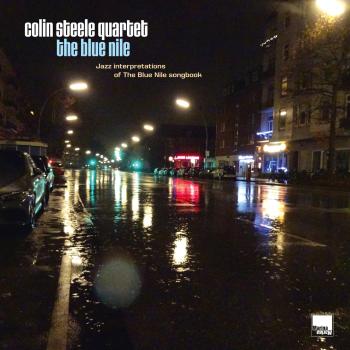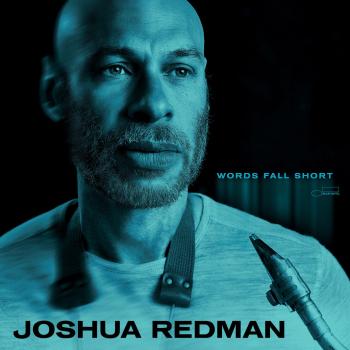
A Prayer for Lester Bowie David Sanford Big Band
Album Info
Album Veröffentlichung:
2021
HRA-Veröffentlichung:
24.09.2021
- 1 Full Immersion 12:47
- 2 Subtraf 09:29
- 3 Woman in Shadows 08:00
- 4 popit 02:49
- 5 A Prayer for Lester Bowie 13:37
- 6 Dizzy Atmosphere 06:28
- 7 Soldier and the CEO 07:19
- 8 V-Reel 08:45
Info zu A Prayer for Lester Bowie
Composer-arranger and bandleader David Sanford has a capacious musical mind, one attuned to multiple genres and the joy of their aural collision. Keenly attuned not only to his rich African-American inheritance but also to the widest range of culture, he has been influenced by big-band classics and avant-jazz innovators as well as the sweep of the cinema, the harmonic explorations of classical modernists, the artful aggression of rock and the irresistible rhythms of funk. Recognized for his accomplishments in concert halls, on jazz stages and as an educator, Sanford – a longtime professor at Mount Holyoke College in Massachusetts – was honored this year by the American Academy of Arts & Letters for “outstanding artistic achievement,” an award for “composers who have arrived at their own voice.” His newest album, A Prayer For Lester Bowie, will be released by Dave Douglas’s Greenleaf Music label on Sept. 24, 2021, digitally and on CD. Sanford convened top jazz and contemporary-music players from across the U.S. to record his work at the storied Sear Sound in Manhattan, with nine-time Grammy Award-winning engineer Tom Lazarus capturing the grit of the large ensemble live in the studio. A key contributor to the sound and spirit of the David Sanford Big Band is trumpet soloist Hugh Ragin, who also composed and conducted the album’s “A Prayer For Lester Bowie” title work in homage to the late, great trumpeter and co-founder of the Art Ensemble of Chicago. The rest of the album comprises six characteristically kaleidoscopic Sanford compositions – inspired by everything from rollercoasters to film noir – plus his modern arrangement of “Dizzy Atmosphere,” by one of his earliest jazz influences, Dizzy Gillespie.
About his approach in the studio, Sanford says: “The tracks of A Prayer For Lester Bowie were recorded live in the studio. Even before the pandemic limited us all to Zoom recordings from our apartments and bedrooms, I’ve been in love with the sound of a band with a microphone hanging in the middle of the room. Obviously, this wasn’t made quite that simply, but I really wanted the recording to sound like hearing a band in person, with that raw edge of the brass cutting through, the drums veering toward over-powering, the sense that soloists could be swallowed up at any minute. I was talking with someone about the appealing ‘grit’ of older – specifically early- to mid-1970s – movie soundtracks. That’s the aesthetic I grew up with that made me want to create my own music in the first place. You can still find it live, but rarely in the studio. I love luxuriating in the sound of brass, saxophones, electric guitar, bass, drums, etcetera all in a room.”
Ragin’s contribution to the album, as a trumpet soloist and composer-arranger of the title track, was inspirational – as Sanford explains: “I remember a critic, years ago, describing Hugh’s tone as ‘pithy, yet malleable,’ and I think the duality of Hugh’s technical virtuosity alongside his sense of sonic adventure is unique. He’s one of the rare musicians – along with Kenny Wheeler, Bruce Johnstone, maybe Chick Corea and Jon Faddis who toured and recorded with both Maynard Ferguson and Anthony Braxton. As a soloist, Hugh is endlessly fascinating. He’s introspective, yet a fount of ideas – his playing always suggests that he has infinitely more things to say than the music has space for. I feel like he’s in the lineage of Lester Bowie in the sense that you hear the tradition in what he’s saying, but also in the sense that there’s no limit – in Hugh’s case, harmonically, registrally, dramatically – to what might happen next.”
Ragin studied with the Art Ensemble of Chicago in the late ’70s, underscoring his connection to the subject of “A Prayer For Lester Bowie.” Sanford says: “To me, the majority of the jazz remembrances that we know – ‘Goodbye Pork Pie Hat,’ ‘Django,’ ‘I Remember Clifford’ – are mourning the loss. In ‘A Prayer For Lester Bowie,’ I feel that Hugh is connecting more with the spirit of Lester, with what and how he created, and the ‘way forward’ that’s a part of his legacy. The cadenza Hugh plays at the beginning strikes me as his one-to-one communion with Lester.” On “A Prayer For Lester Bowie,” Ragin not only played the solo intro; he also, inspired by the example of Butch Morris, led the studio performance by “conduction.” Along with Ragin, the David Sanford Big Band’s lineup includes such outstanding soloists as virtuoso trombonist Mike Christianson (who plays an extended blues solo in “Subtraf”), tenor saxophonist Anna Webber, alto saxophonist Ted Levine and guitarist Dave Fabris, among others.
Sanford’s compositions have been commissioned by the Boston Modern Orchestra Project, Speculum Musicae, Meridian Arts Ensemble, and star cello soloist Matt Haimovitz, along with also being performed by the Chamber Music Society of Lincoln Center, Chicago Symphony Chamber Players, and the Cabrillo Festival Orchestra conducted by Marin Alsop. Sanford has led his own big band, a group with a resolutely contemporary spirit (and formerly known as the Pittsburgh Collective), for some 18 years. His pieces for the ensemble on A Prayer For Lester Bowie were inspired by a characteristic array of influences, musical and extra-musical: “The Soldier and the CEO” by scenes from films (including David Fincher’s The Game), with an expansive six-string solo by Fabris a highpoint; the dynamic “Full Immersion” by both a fountain in Rome and the New Orleans funk band Galactic; and the dark-hued ballad “Women in Shadows” from Luke Swank photos that reveal what the composer calls “the intoxicating dichotomy of beauty and grace in an environment of urban decay and extreme air pollution that was Pittsburgh of the 1930s.”
Two tracks were inspired by Sanford’s beloved rollercoasters. “V-Reel” references the Virginia Reel, a ride at New Jersey’s old Palisades Park (which went up in flames in 1944, fatally – suggesting to the composer a kinship with a plot point in David Foster Wallace’s epic novel Infinite Jest). Critic Paul Griffiths described the composition this way: “ ‘V-Reel’ communicates the proximity of joy and terrifying power in these images from life and literature… The contrapuntal section pays homage to Bach and Bernstein, and other musical memories are bound up in the piece, from Miles Davis’s ‘Prelude to Agharta’ to Jesus Christ Superstar, from The Rite of Spring to Louis Andriessen and the rock band Soul Coughing.” The other track with the essence of a thrill ride is “popit.” Sanford explains: “That was actually the misheard phrase ‘all clear’ spoken by the ride operators at Virginia’s Kings Dominion amusement park right before the dispatch of trains on the now-defunct Volcano: The Blast Coaster, which began with two sudden launches that reached 70 miles per hour. Its more concrete musical influences are The Clash’s ‘White Riot’ and late-’80s Boston hardcore band Hullaballoo, whose songs sometimes included improvised trumpet and sax solos.”
Reflecting further on his inspirations, Sanford says: “I don’t think of myself as a musical colorist the way that a lot of other composers do, but I’m drawn more and more to cinematographic art in film the same way I’ve grown more attracted to soundscapes and sonic atmosphere in music. As for amusement-park rides, it occurred to me some years ago that I was enjoying popular music less and less, probably as a symptom of getting older and further from the target demographic. But I still get the same excitement from rollercoasters that I did when I was 7 years old. The adrenaline rush I get from a jazz combo playing an up-tempo burner is similar to that of a good launch on a rollercoaster. When they’re done well, thrill rides are crafted like the music I love most: tension, release, surprise. It’s what I aspire to.”
Ted Levine, alto saxophone
Kelley Hart-Jenkins, alto saxophone
Anna Webber, alto saxophone (tracks 1, 2, 7, 8)
Marc Phaneuf, alto saxophone (tracks 3-6)
Geoff Vidal, tenor saxophones
Brad Hubbard, baritone saxophone
Brad Goode, flugelhorn, trumpet (tracks 1-7)
Tony Kadleck, trumpet (track 8)
Tim Leopold, trumpet
Wayne J. du Maine, trumpet
Thomas Bergeron, trumpet
Hugh Ragin, trumpet
Mike Christianson, tenor trombone
Jim Messbauer, tenor trombone
Ben Herrington, tenor trombone (tracks 1, 2, 4, 6-8)
Mike Seltzer, tenor trombone (tracks 3, 5)
Steven Gehring, bass trombone
Raymond Stewart, tuba
Dave Fabris, electric guitar
Geoff Burleson, piano
Dave Phillips, electric and acoustic bass
Mark Raynes, drums
Theo Moore, percussion
David Sanford, conductor (tracks 1-4 and 6-8)
Hugh Ragin, conductor (track 5)
David Sanford
“Both raucous and exquisitely poised, the music was decked out with some broadly perceptible reference points – including traces of classical modernism, jazz improvisation and the attack of punk. Yet it was the composer’s way of combining these surface-level traits that proved most memorable.” – The New York Times
Born in Pittsburgh, PA in 1963, David Sanford received degrees in music theory and composition from the University of Northern Colorado, New England Conservatory, and Princeton University where he received the PhD in music composition. During these years, he studied composition and theory with Richard Bourassa, Robert Ehle, Arthur Berger, Pozzi Escot, Jim Randall, Claudio Spies and Steve Mackey. He is the founder and director of the David Sanford Big Band, a twenty-piece contemporary big band formerly known as the Pittsburgh Collective.
Sanford’s honors include the Rome Prize, fellowships from the Guggenheim Foundation and the Radcliffe Institute, an Ives Scholarship and a Goddard Lieberson Fellowship from the American Academy of Arts and Letters, awards from BMI, ASCAP, and Phi Mu Alpha Sinfonia, and a Composer Portrait concert at Miller Theater. He was composer-in-residence at Concert Artists Guild and at Vanderbilt University’s Blair School of Music (through BMI), guest composer at the Wellesley Composers Conference, and a chosen participant in the African American Composers Forum with the Detroit Symphony. He has received commissions from the Fromm Foundation for the Boston Modern Orchestra Project, Chamber Music America for the Meridian Arts Ensemble, the Zéphyros Winds, and the Festival of New Trumpet Music, from the Koussevitzky Foundation for cellist Matt Haimovitz and the Pittsburgh Collective, the Barlow Endowment for pianist Lara Downes, the Mary Flagler Cary Trust for Speculum Musicae, and from Castle of our Skins, Astral Artists, the New England Conservatory Wind Ensemble, the Pittsburgh New Music Ensemble, the Da Capo Chamber Players, the Princeton University Orchestra and Jazz Ensemble, the Empyrean Ensemble at UC Davis, and the Mana Saxophone Quartet. In addition, his works have received performances by the Berkeley Symphony Orchestra under Kent Nagano, the Cabrillo Festival Orchestra under Marin Alsop, the Detroit Symphony under Leslie Dunner, the Peabody Modern Orchestra under Cliff Colnot, the Chamber Music Society of Lincoln Center, the Chicago Symphony Chamber Players, and the U.S. Army Band “Pershing’s Own” at the National Museum of African American History and Culture, among many others.
Sanford’s works have been recorded by artists including Speculum Musicae, Matt Haimovitz, the Meridian Arts Ensemble, pianist Lara Downes and New York Philharmonic cellist Eric Bartlett. The title track of the Boston Modern Orchestra Project’s recording of the composer’s works, Black Noise, was named one of “The 25 Best Classical Music Tracks of 2019” by the New York Times, the Pittsburgh Collective’s CD Live at the Knitting Factory, featuring his compositions and arrangements was named one of the albums of the year in Jazziz magazine; and Haimovitz’s disc Meeting of the Spirits with his cello ensemble UCCELLO, which featured seven jazz arrangements and one composition by Sanford, received a four-star review from Downbeat magazine, and was nominated for a Grammy Award.
David Sanford Big Band
The New York-based David Sanford Big Band (formerly the Pittsburgh Collective) was formed in 2003 and comprises twenty musicians specializing in jazz, avant-garde, classical, funk and Latin genres. Members and soloists have included Hugh Ragin, Jon Irabagon, Anna Webber, Josh Roseman, Mike Christianson, Steven Bernstein, Bruce Johnstone, Chris Washburne, Adam Kolker, Ted Levine, Tony Kadleck, Hiro Noguchi, Dave Ballou, and players from the Meridian Arts Ensemble, Boston Musica Viva, the Knights, the Metropolitan Opera Orchestra, the International Contemporary Ensemble, Talea Ensemble, the Denver Neophonic Jazz Orchestra, and most of the prominent big bands in New York City. Along with presenting original works written expressly for the ensemble, the group performs big band literature that draws heavily on classical idioms (Stravinsky), classical works (Tomkins, Mahler) and popular music (Nick Cave, Sia), as well as jazz standards (Gillespie, Mingus, Elvin Jones). The group also received a commission from the Koussevitzky Foundation for a concerto featuring the classical cellist Matt Haimovitz; the resulting work, Scherzo Grosso, was recorded on their debut disc Live at the Knitting Factory (Oxingale Records, 2007) which topped the “Critics’ Choice” list for 2007 in Jazziz magazine.
Dieses Album enthält kein Booklet

